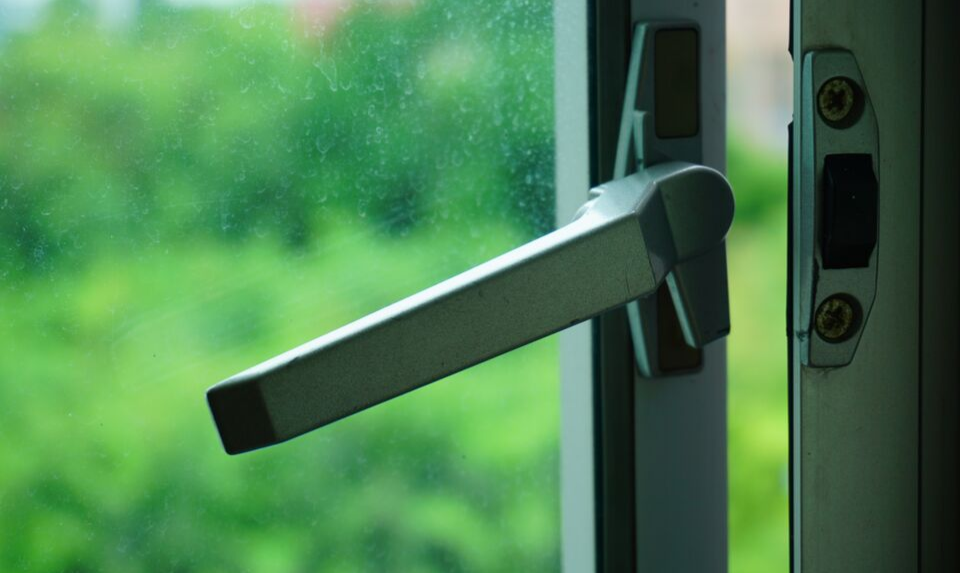Knowing what to do in a fire can save your life. If you can eliminate the fire, do so thoroughly. If not, run for safety and ask for assistance. To escape through a fire, crawl beneath the smoke and make sure avoiding doors that are hot.
As of the National Fire Protection Association, house fires are causes for more than 2,500 deaths per year. But it doesn’t have to be that way. There are fire protection steps you need to know to keep your family safe in the event of a fire.

Of course, prevention is the best step for fire safety, but in case of a fire, you’ll need to know what to do. Let’s go through the steps.
Eliminate the Fire If Possible
If the fire has just sparked—for example, a pan catches fire on the stove—you may be able to eliminate it. Grab your fire extinguisher and remember to PASS: pull the pin, aim at the base of the flames, squeeze the extinguisher handle, and sweep from side to side until the fire is eliminated. Make sure that the fire is completely out and not still smoldering.
Crawl Beneath the Fire to Escape
Fire produces smoke and deadly gases that can cause lightheadedness or loss of consciousness if inhaled—both of which can cause issues if you’re trying to get out of a smoldering building. To escape a fire and its fumes, crawl to the closest exit, remembering that it may be a window. Staying low to the ground will help protect you from inhaling smoke and deadly gases.
Check Doors and Doorknobs for Heat
If you need to go through a door to get to an exit, check if the door is hot. If the door (or doorknob) is warm when you touch it, there might be fire on the other side, so do not go through it. If you open a door and see fire or smoke, shut the door and go to a second exit.
Unlock the Window Lock Quickly

So you don’t get trapped with smoke inside, open the window lock quickly, because it could also be your way to escape from the fire.
Run to Safety
Once you make your way outside, run away from the fire. Parts of the house or apartment, like the roof or siding, may catch fire and fall around the area of the building, so run across the street or down the block to be safe.
Call for Help
Once you have made it away from the flames, call 911. If you don’t have a phone, go to a neighbor’s house and ask to make a phone call. Tell 911 that there’s been a fire at your residence, and then keep the line open to see if they need any other information.
What to Do If You Are Trapped Inside
If you end up trapped, cover the openings around the door with whatever you can use: blankets, jackets, towels, etc. If you can wet them down, do so. Cover vents with wet blankets too, to keep smoke from getting in, and call 911 if you have access to a telephone.
If you got stuck on a building, hang sheets or anything large to get people’s attention out the window to let the fire department know where you are. Do not try to make your way through the fire.

If your clothes catch on fire, you should quickly stop, drop, and roll: stop where you are, drop to the ground, and roll to eliminate the flames. Cover your face with your hands as you roll, as well, to protect yourself from flames.
How to Prevent a Fire in Your Home
We hope that you won’t have to face this life-threatening situation. For this not to happen, there are a lot of fire safety steps that you can take.
Check Your Smoke detectors
A working smoke detector can save your life. The National Fire Protection Association reports that 38% of home fire casualties resulted from fires in homes that didn’t have any smoke detectors, and another 21% happened in homes with smoke detectors that failed to work. Of those smoke detectors that failed to work, nearly half has dead or non-working batteries. These numbers show how relevant it is to have well-maintained and functional smoke detectors all throughout your home.
Get a high-quality smoke detector for each floor of your residence (including the basement), and outside of each bedroom. Use 2 types of smoke detectors—ionization and photoelectric—or hybrid alarms for additional safety, and test the detectors monthly.
Did you know that not only the batteries but also the detectors themselves should be changed once a year? On the back of your detectors is a manufacture date. At ten years from that date, it’s time to change the old alarm.
Have Fire Extinguishers
Don’t let a small fire make its way your entire home if you can prevent the fire at the source. A good fire extinguisher that you took the time to learn to use can give you peace of mind.
